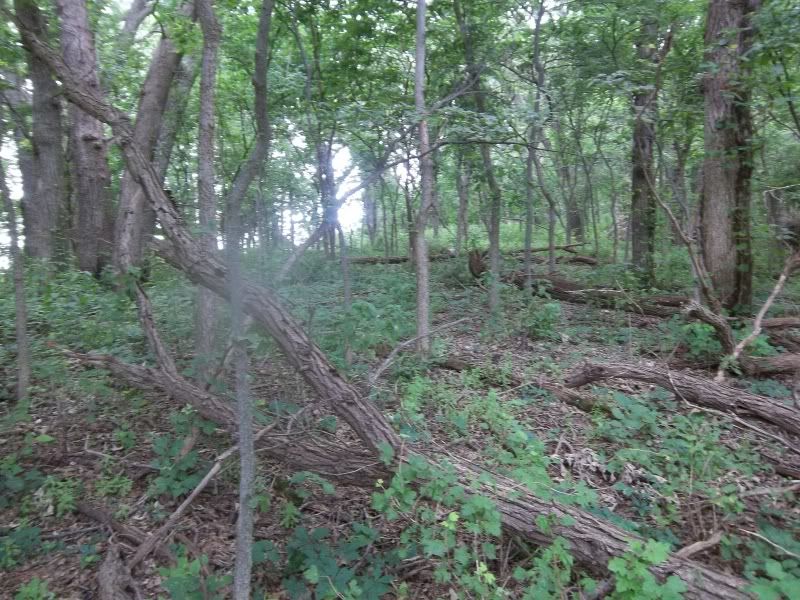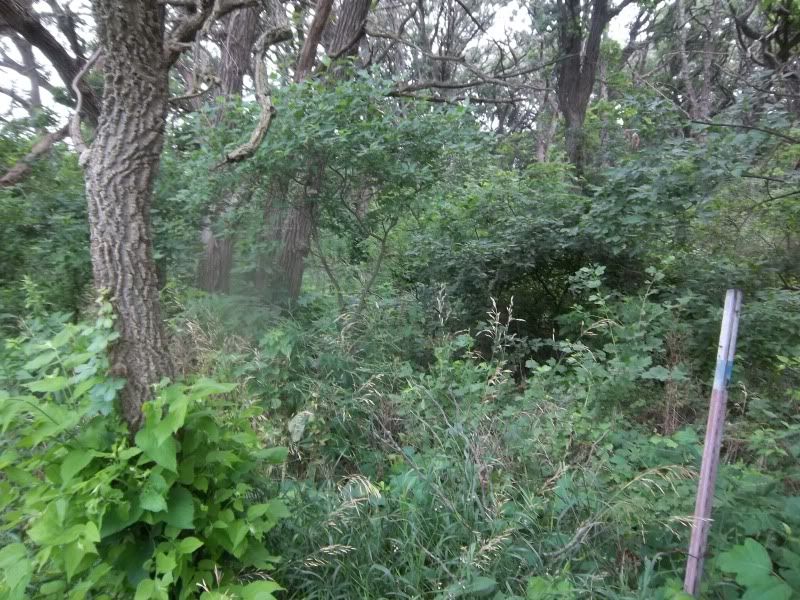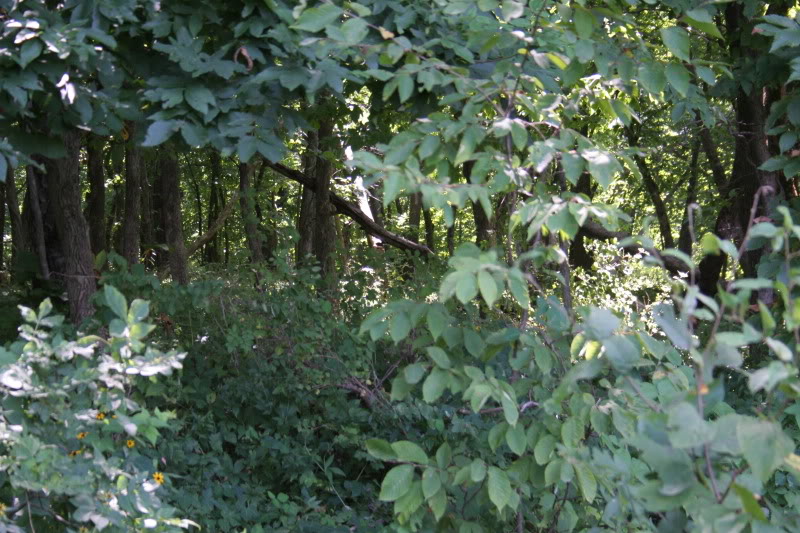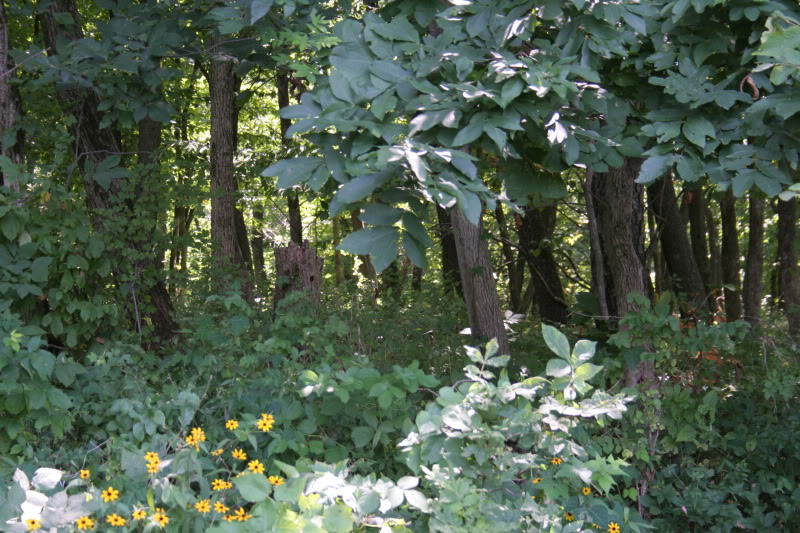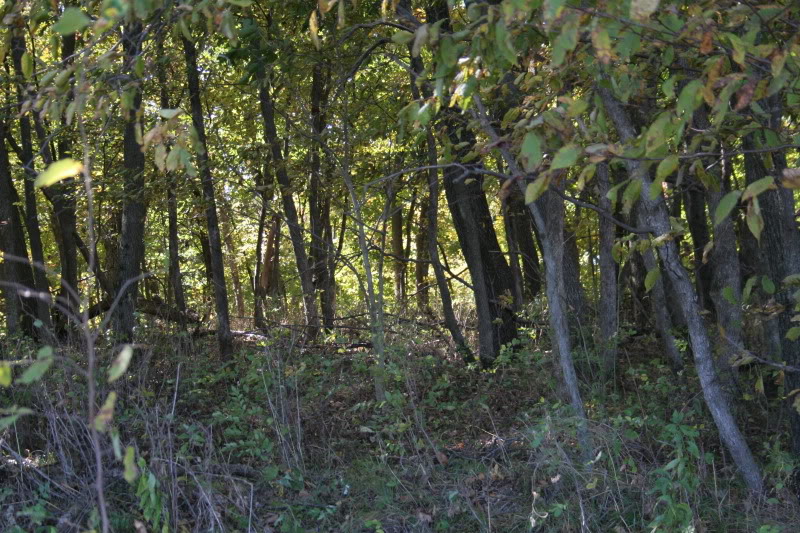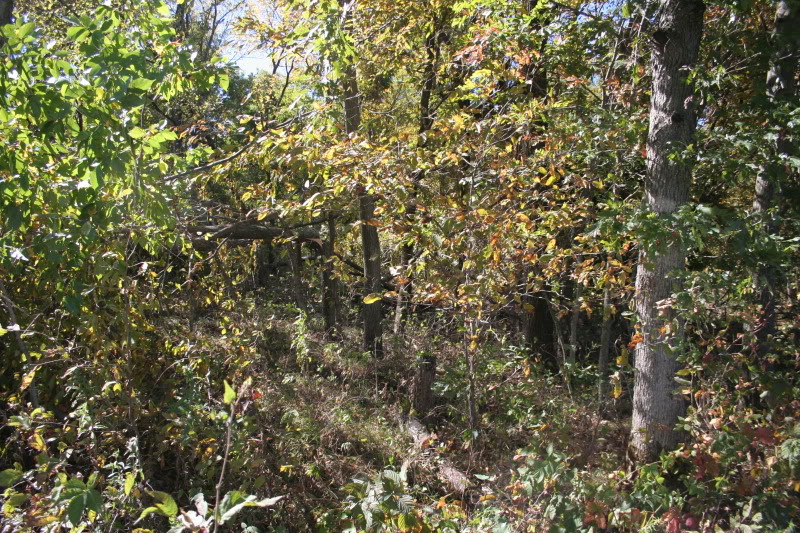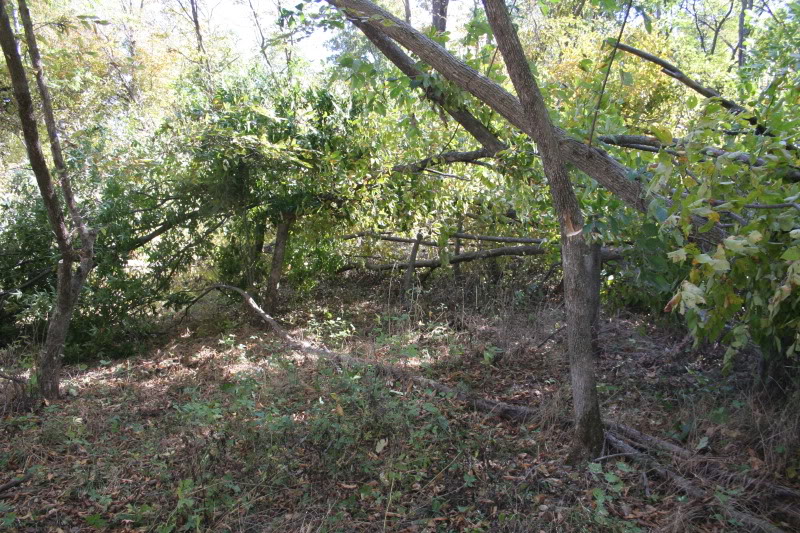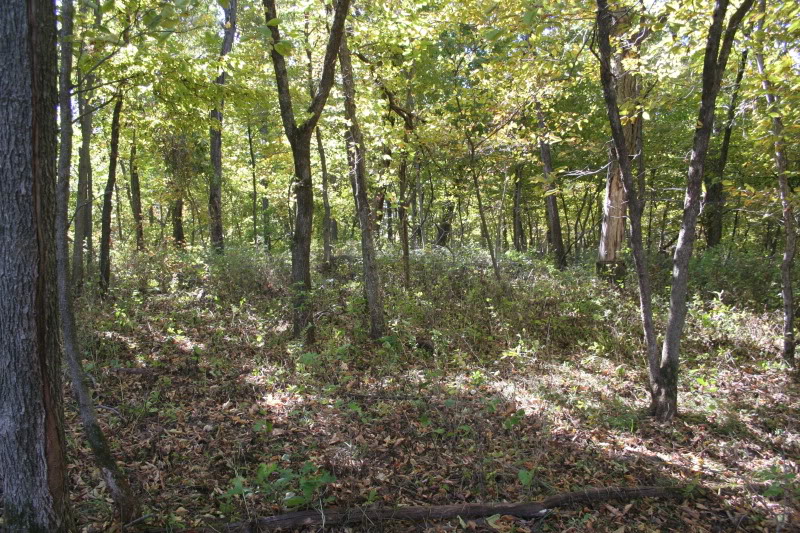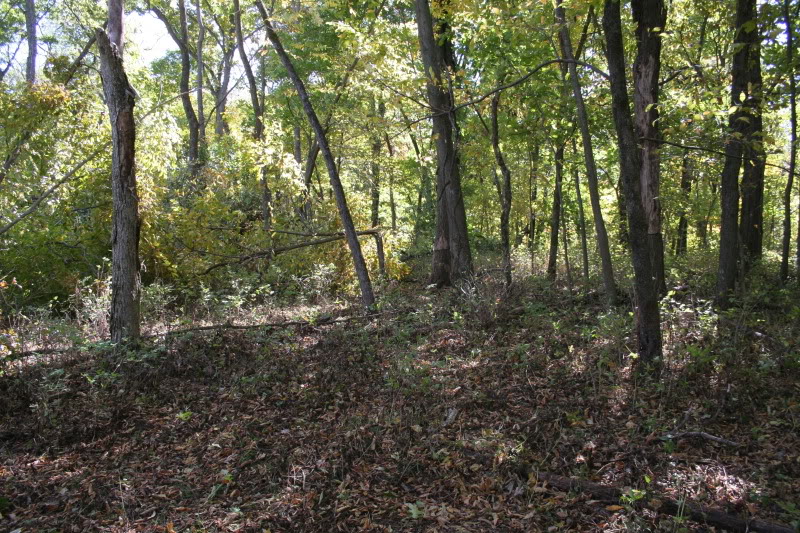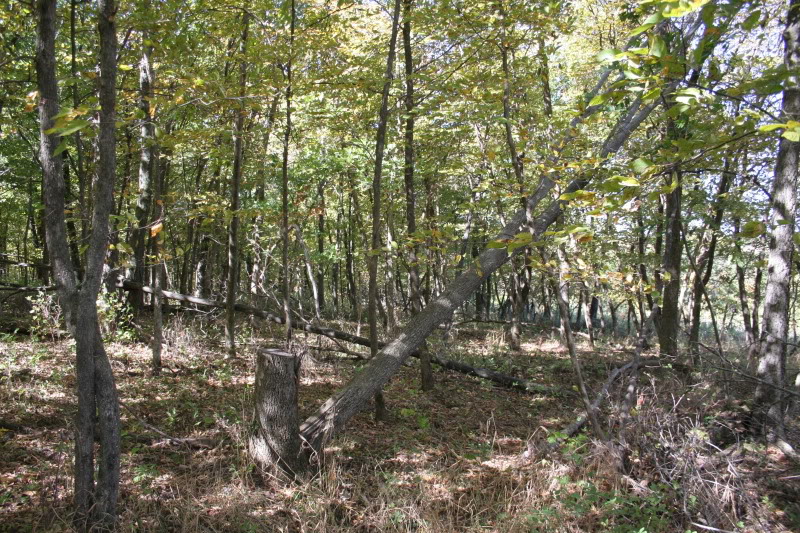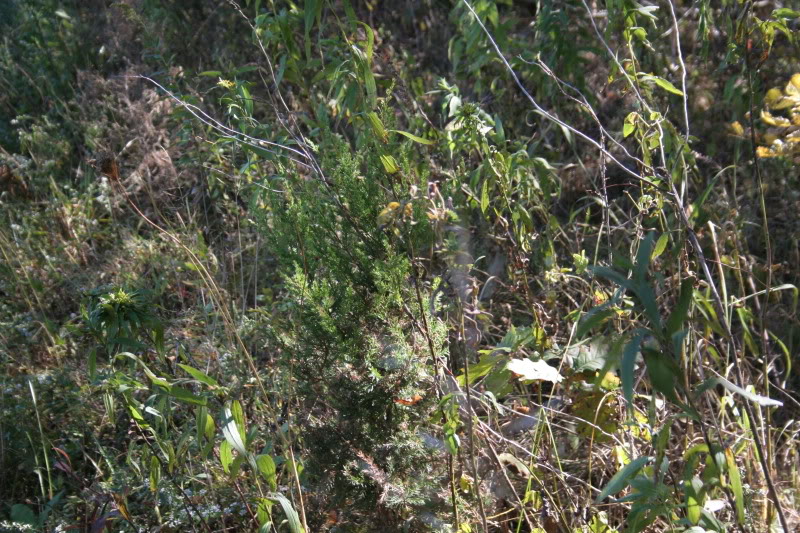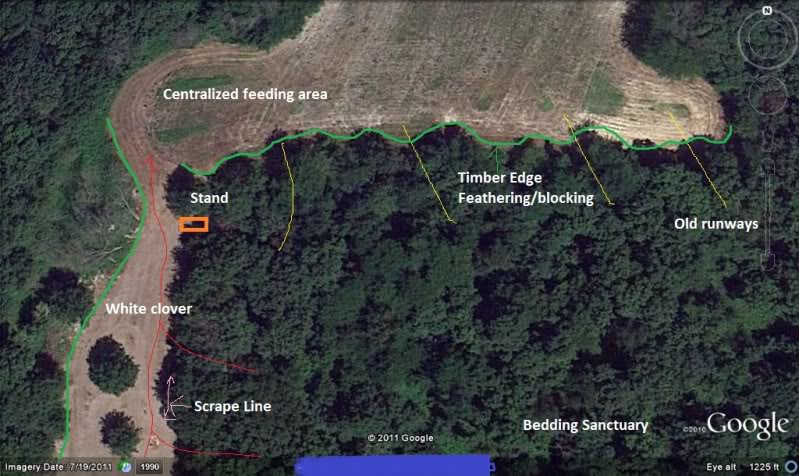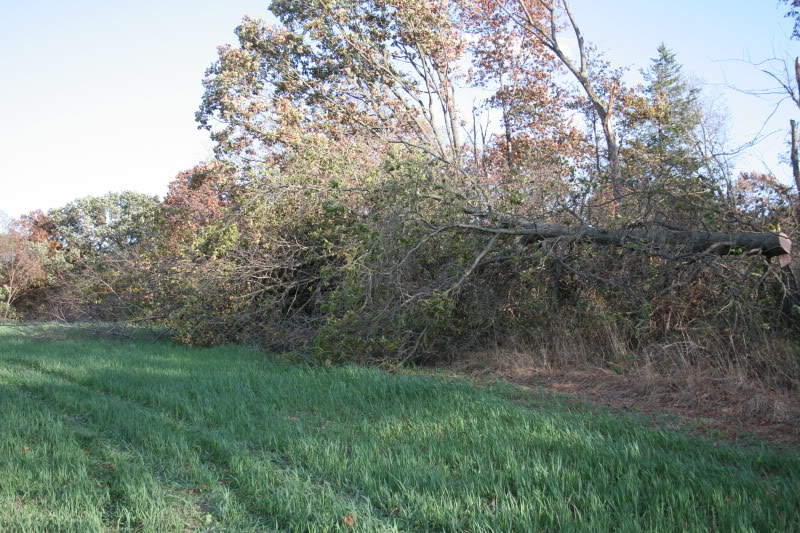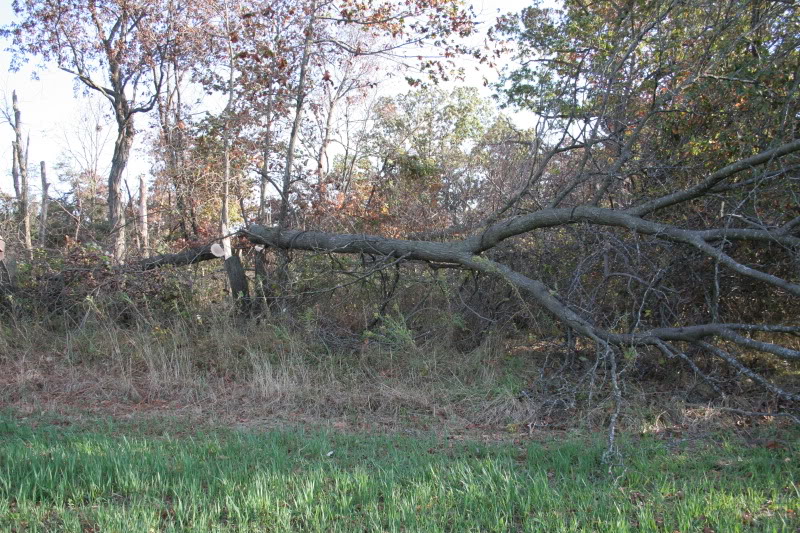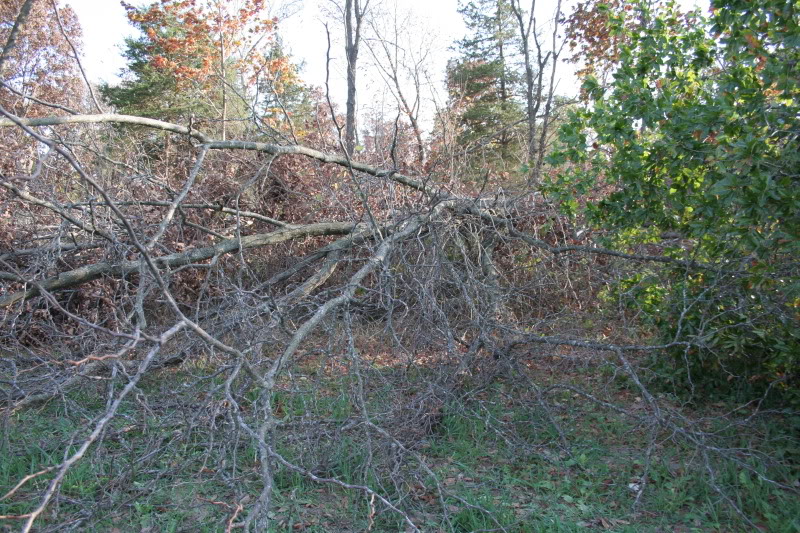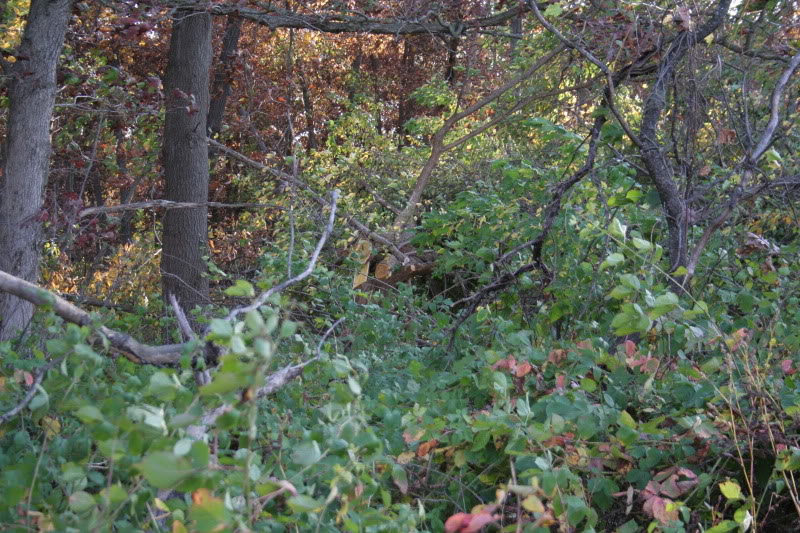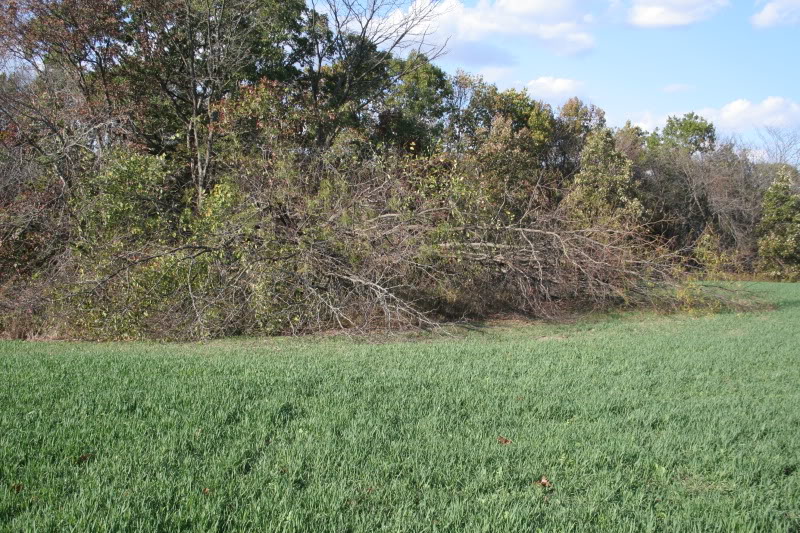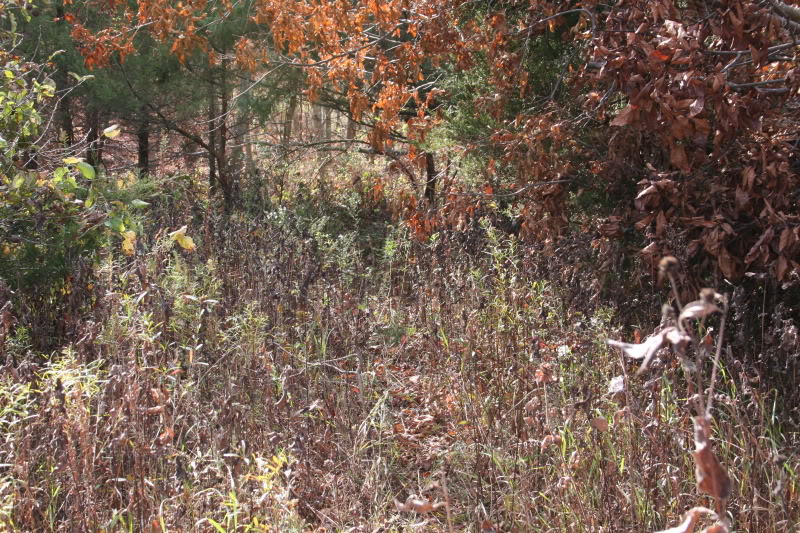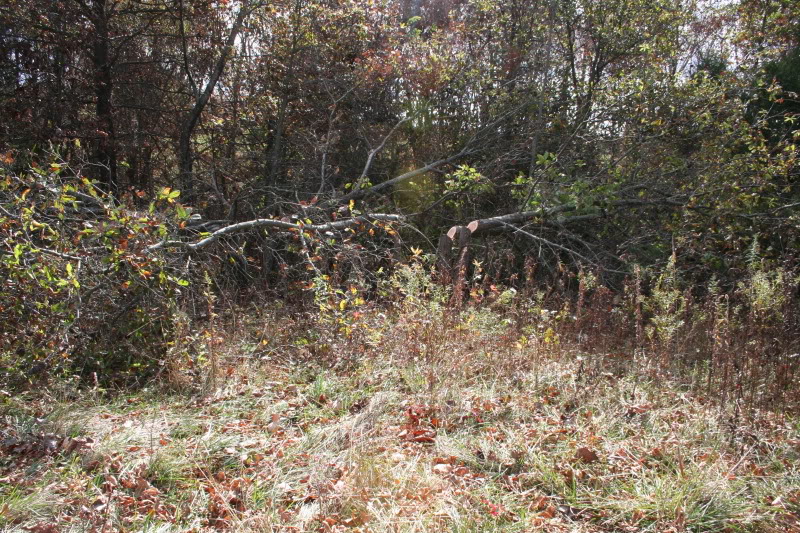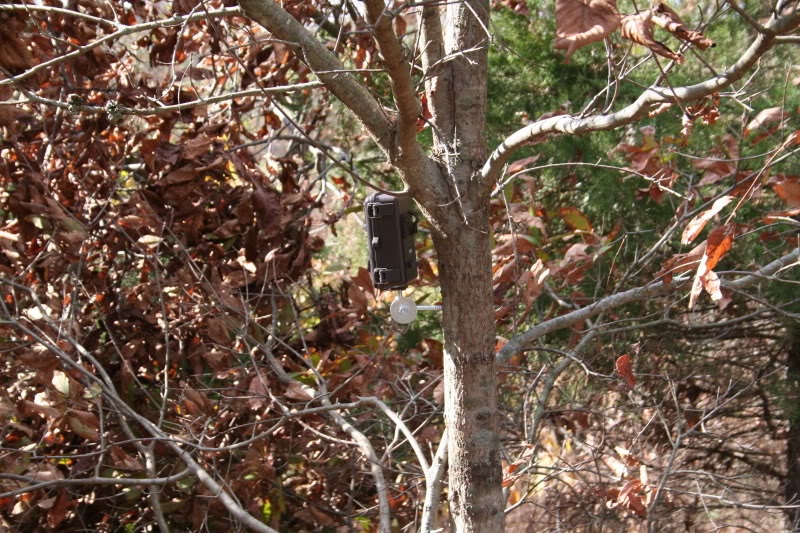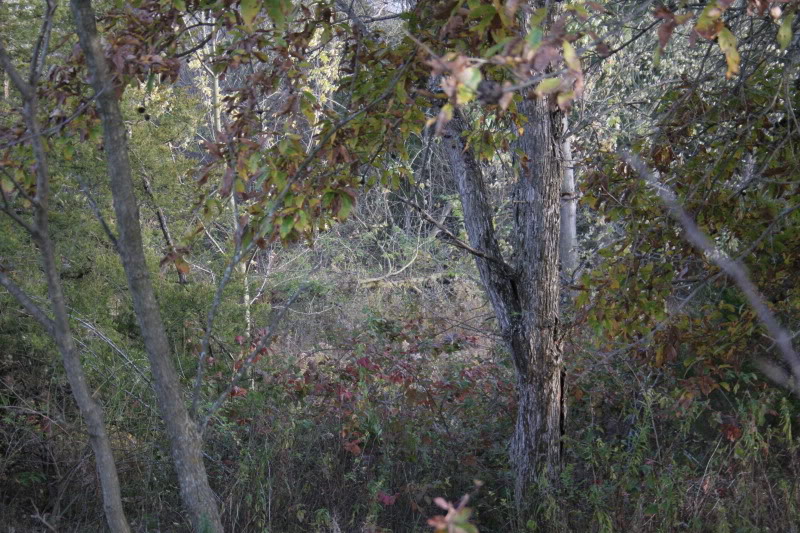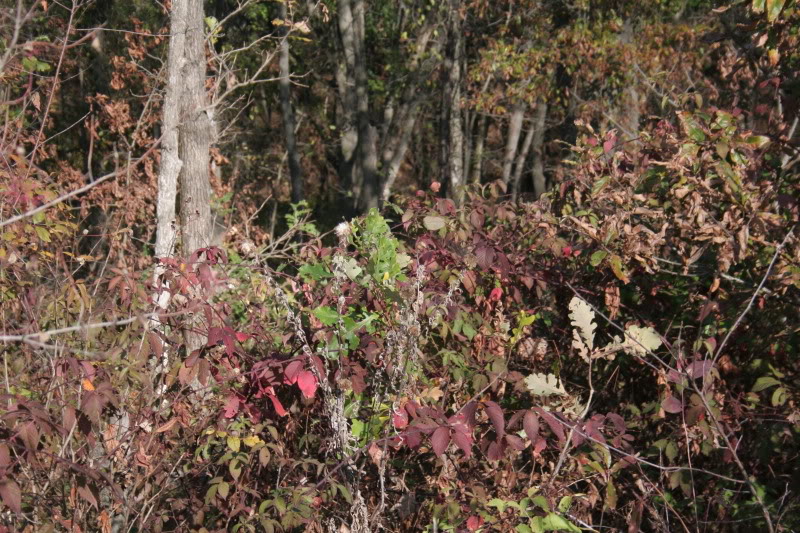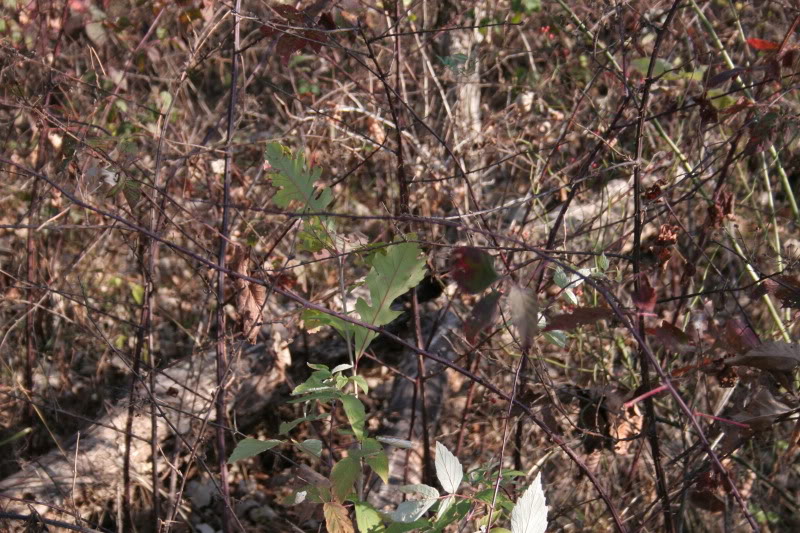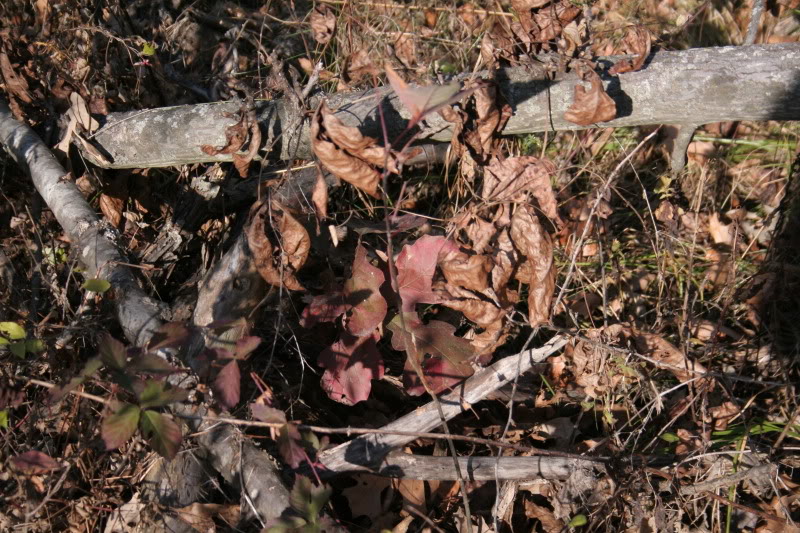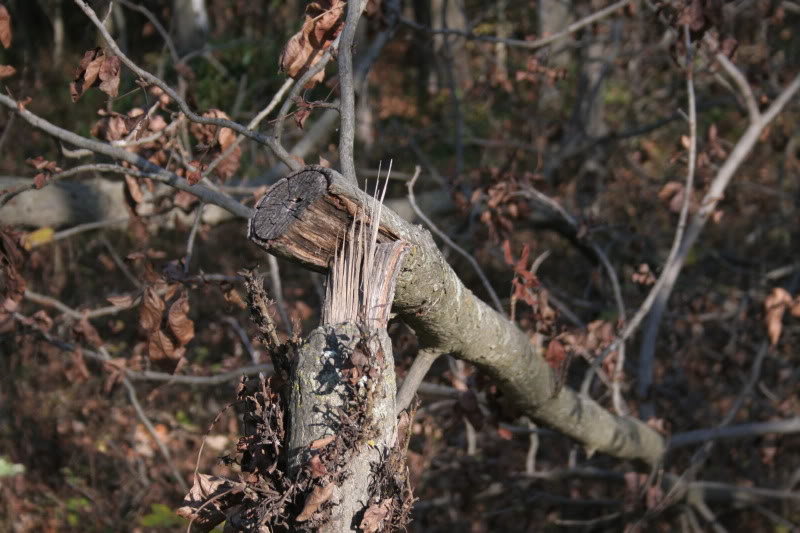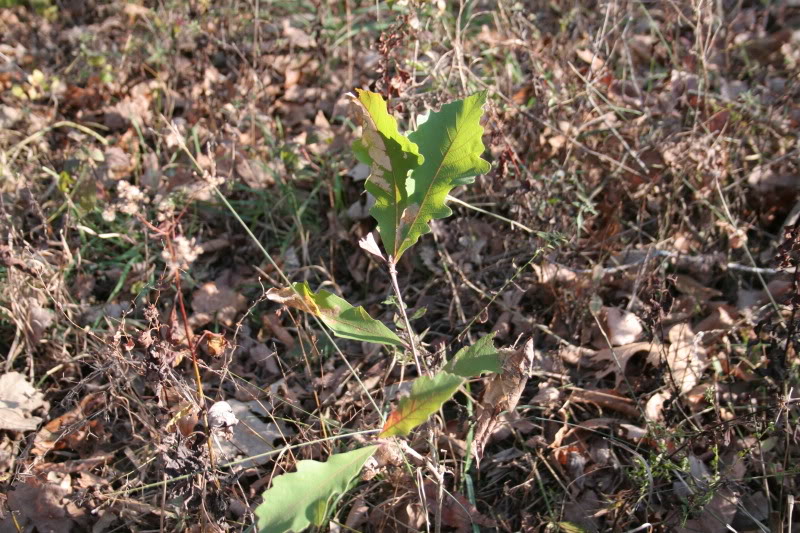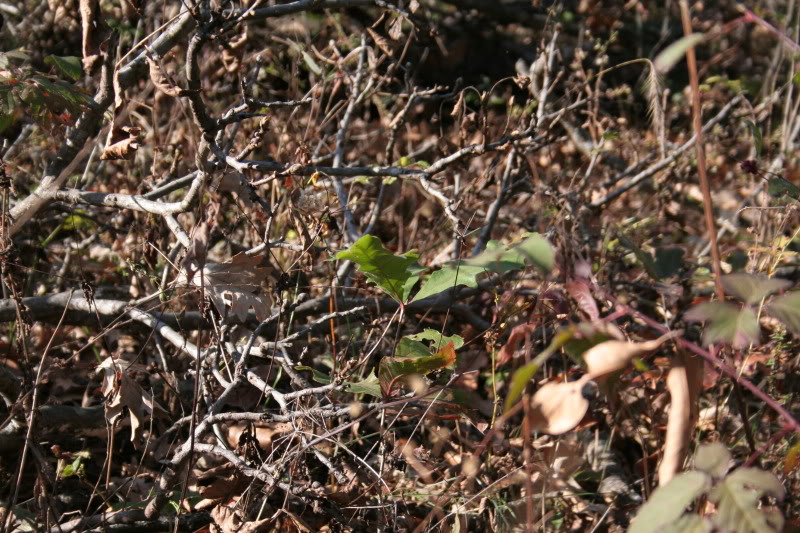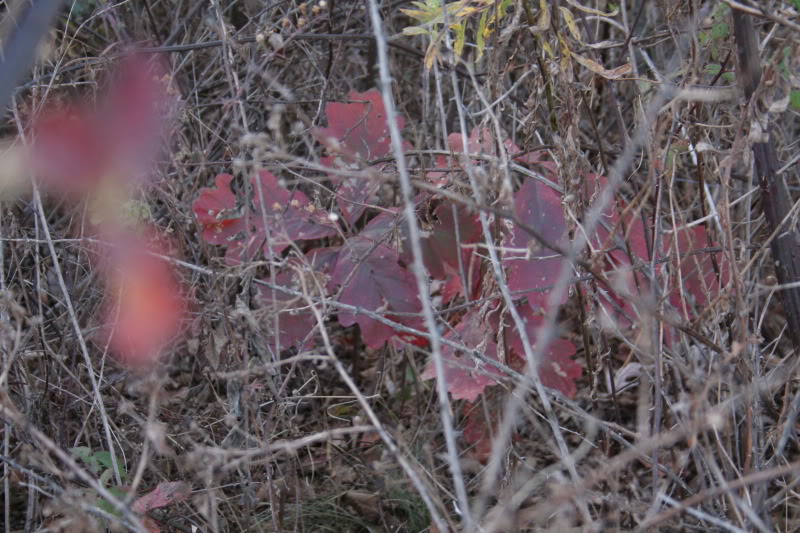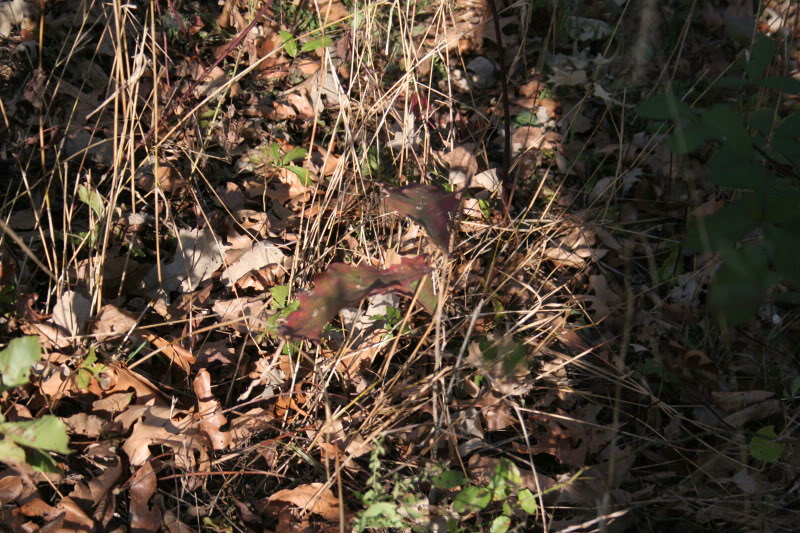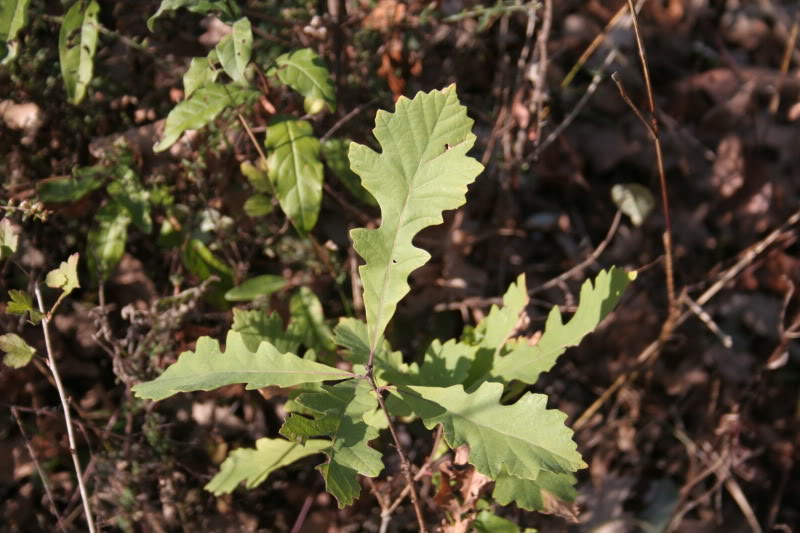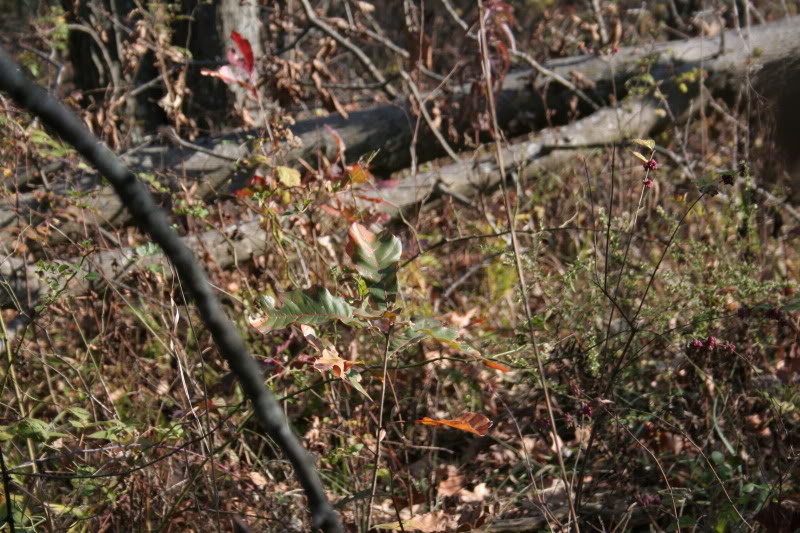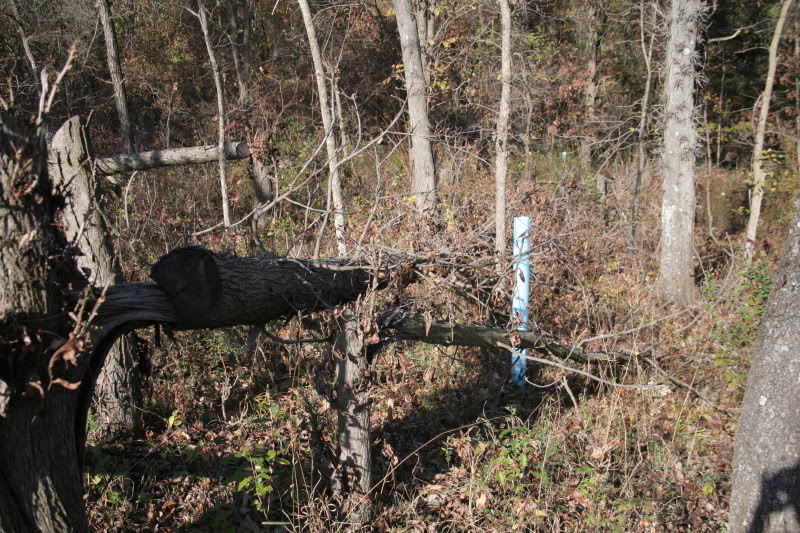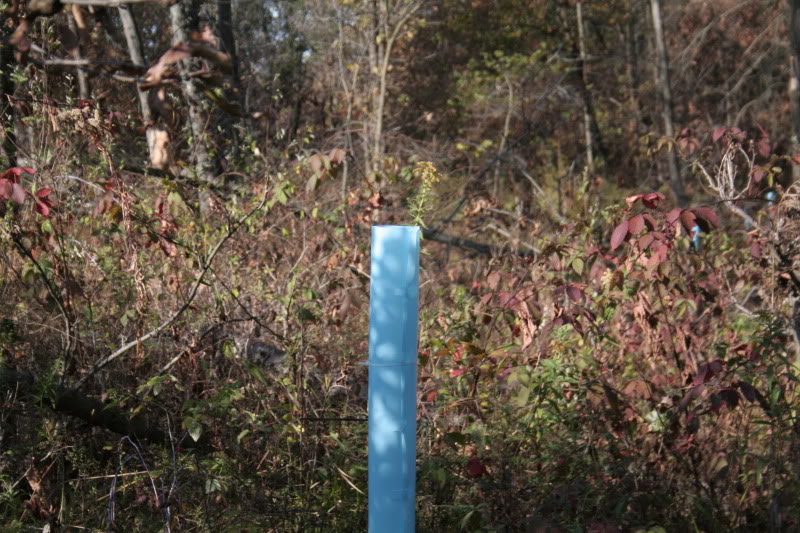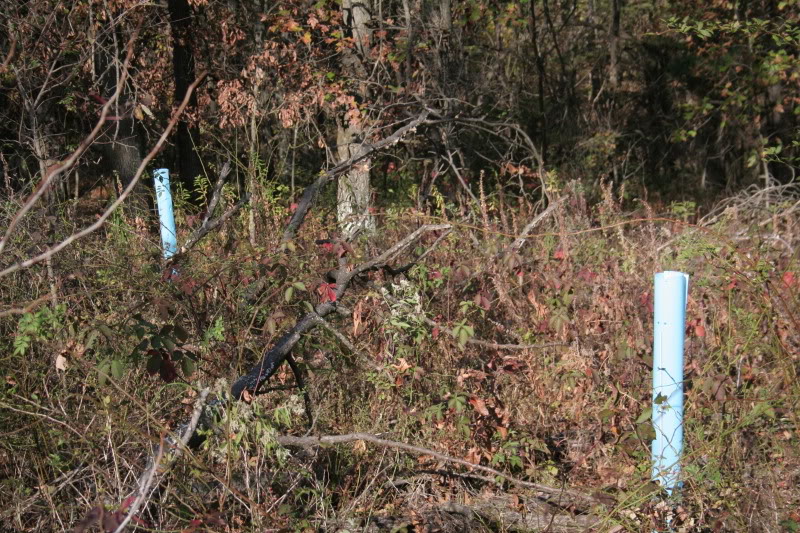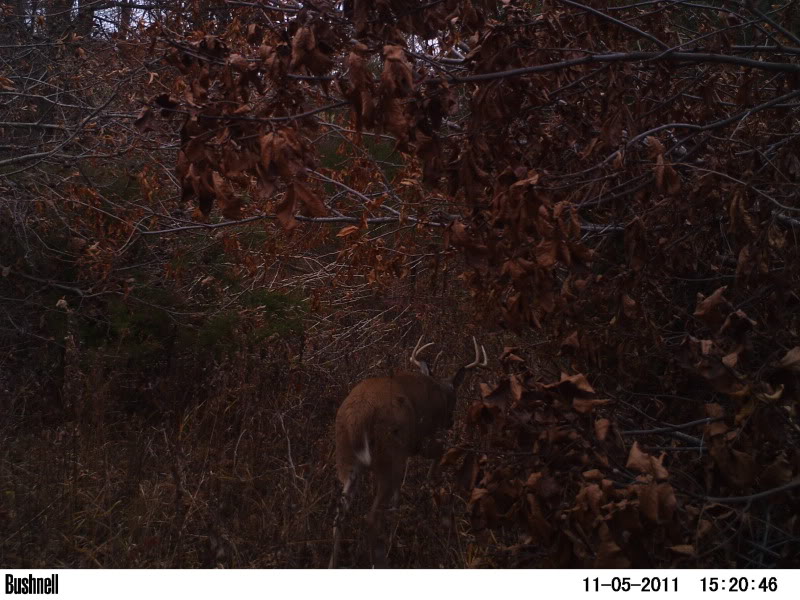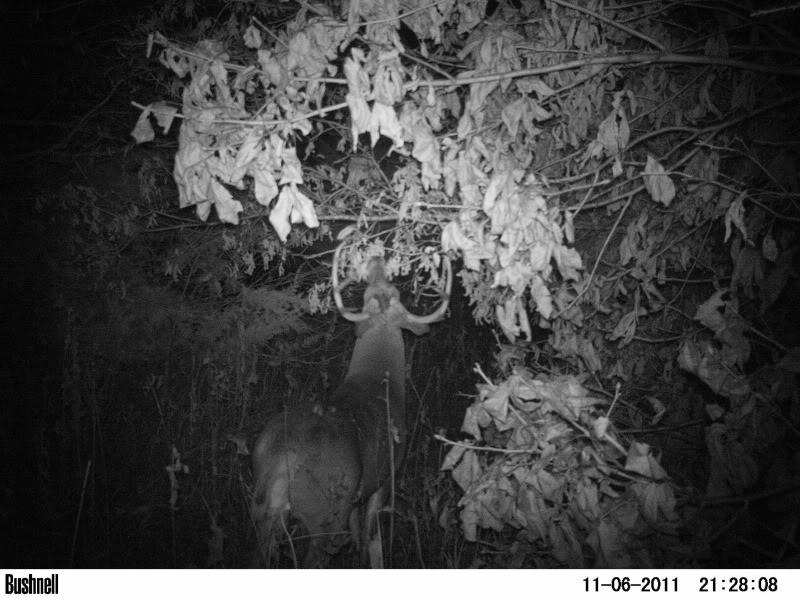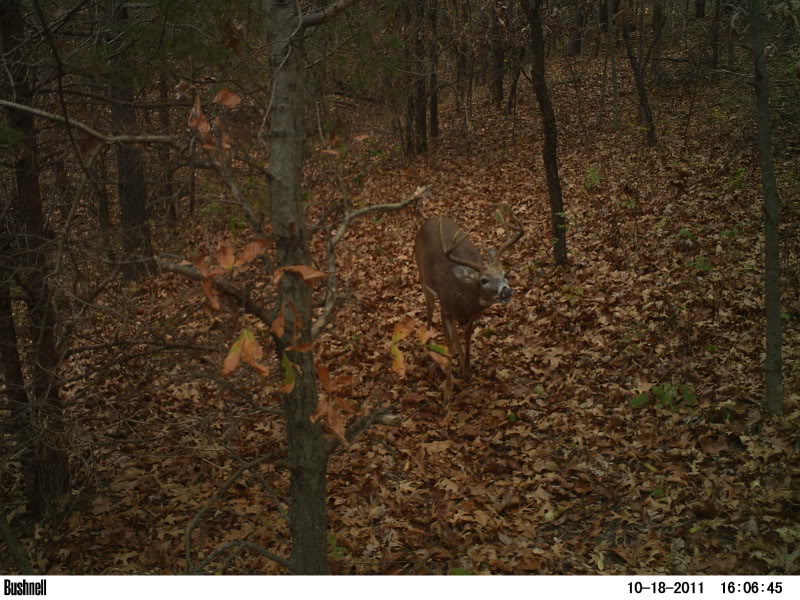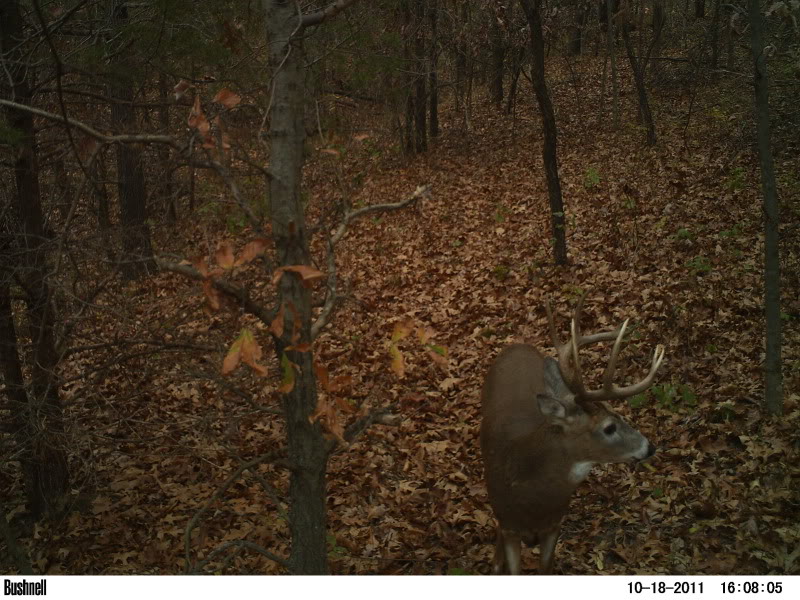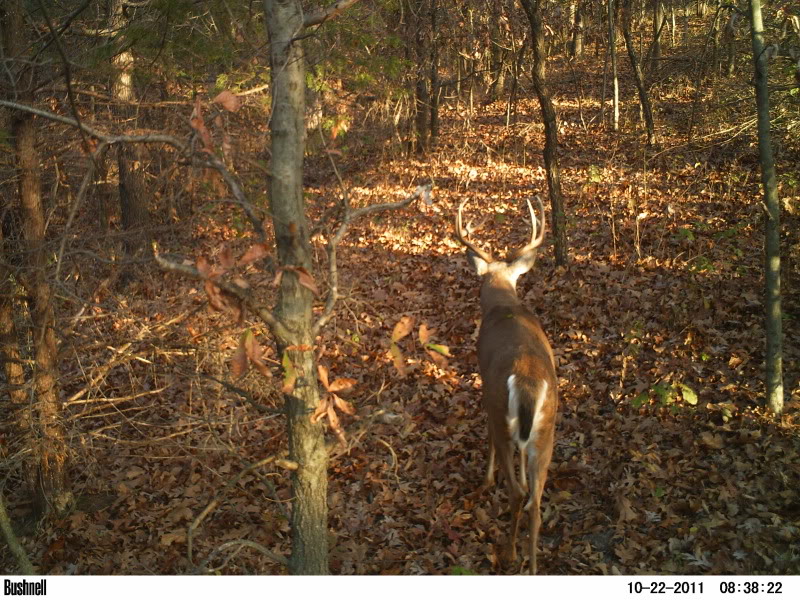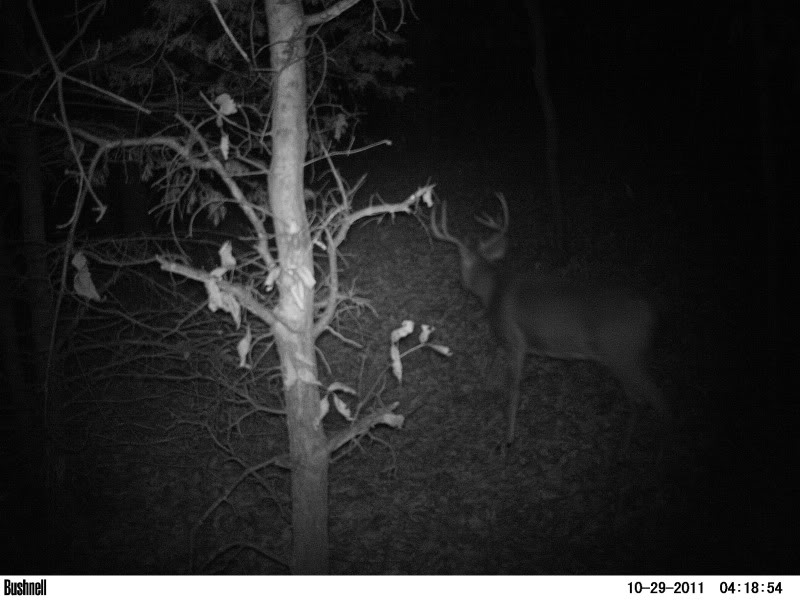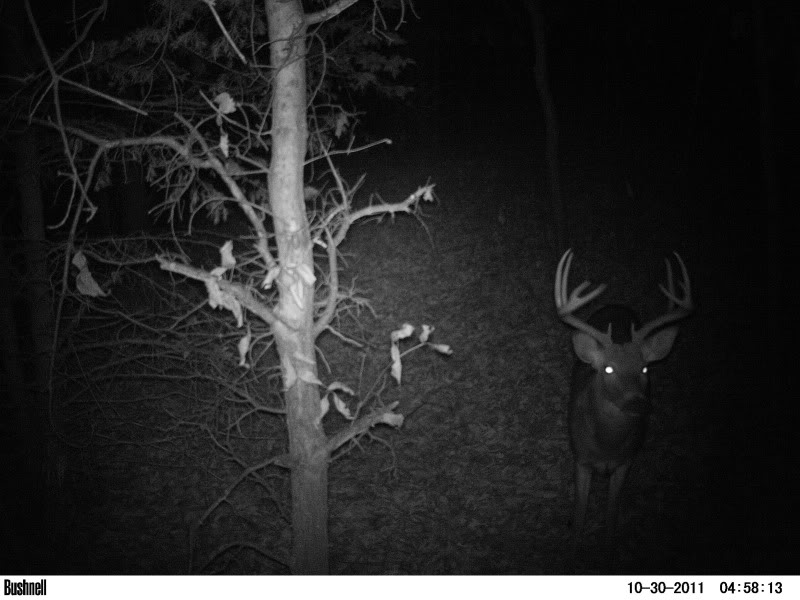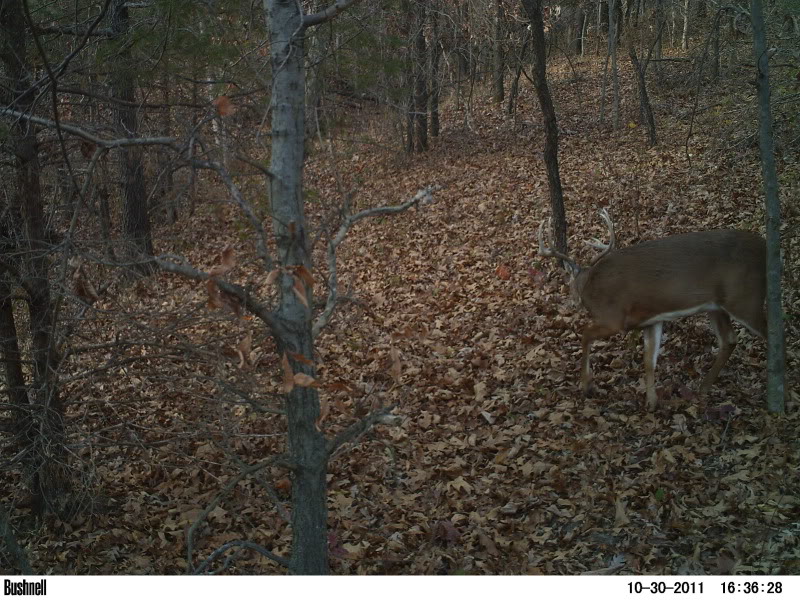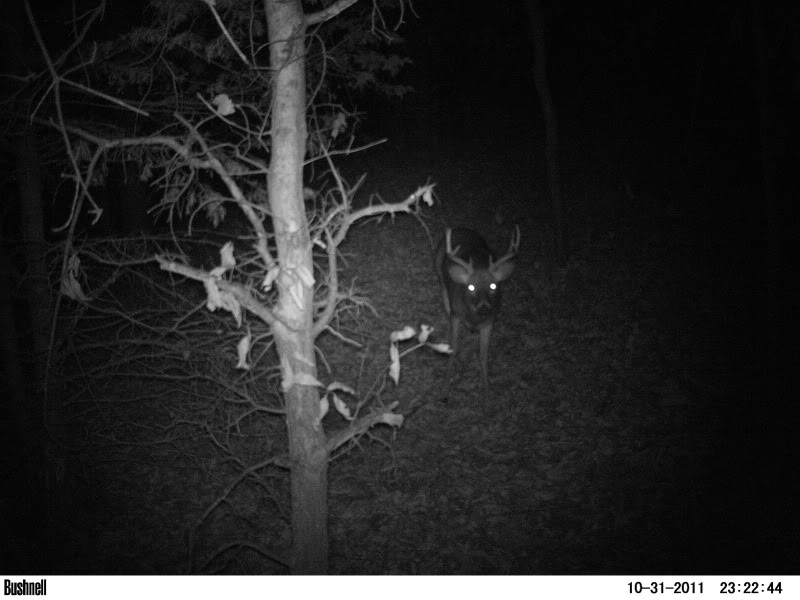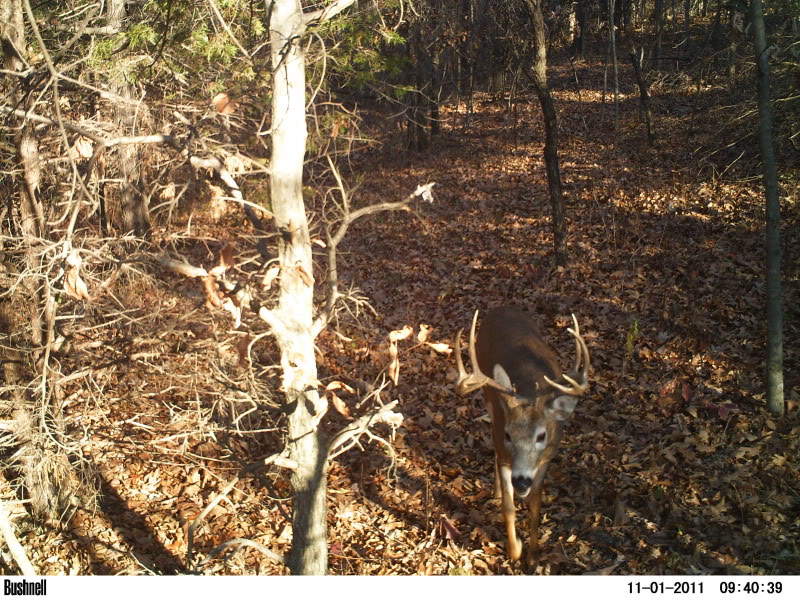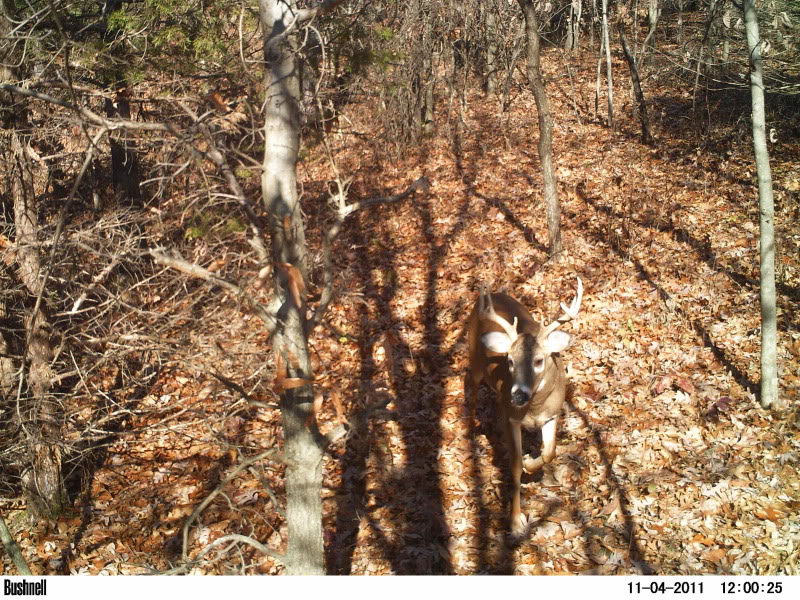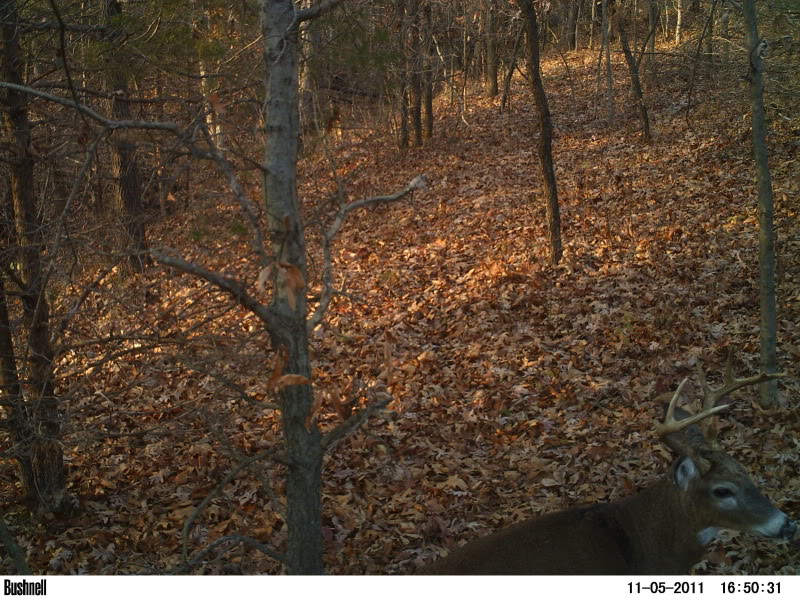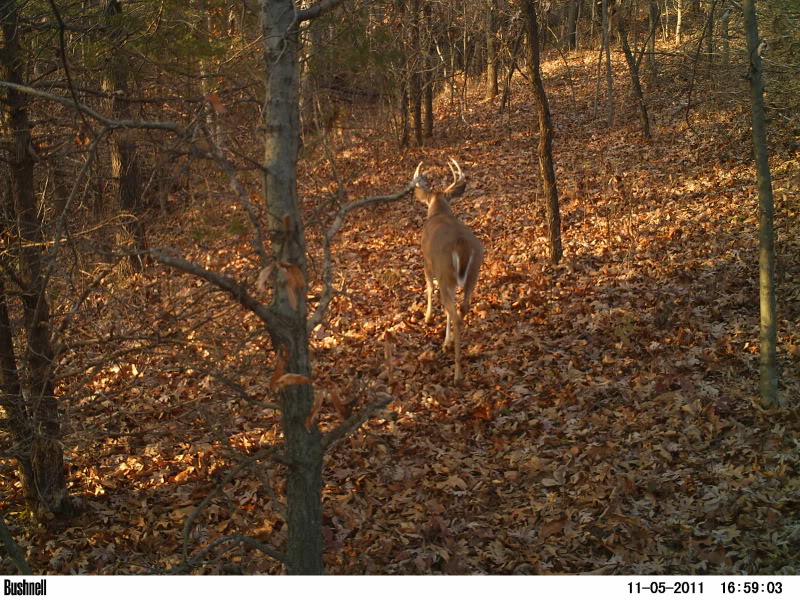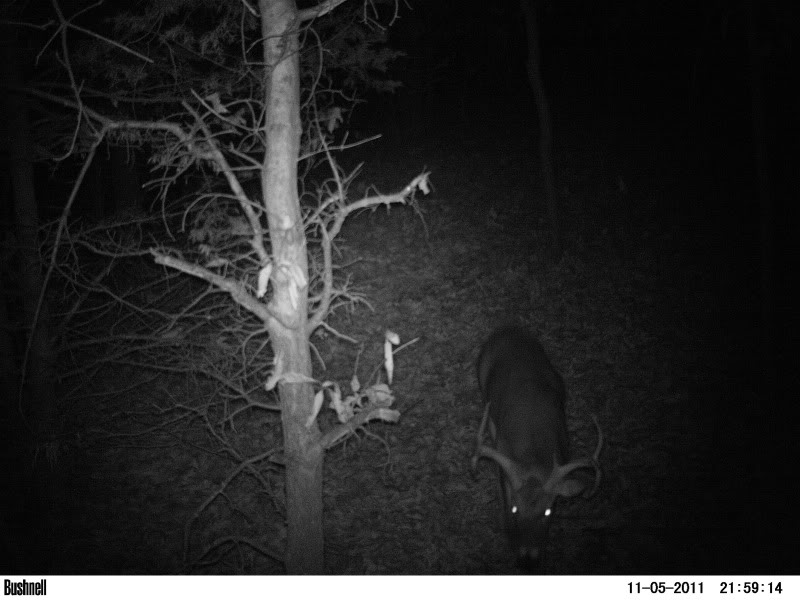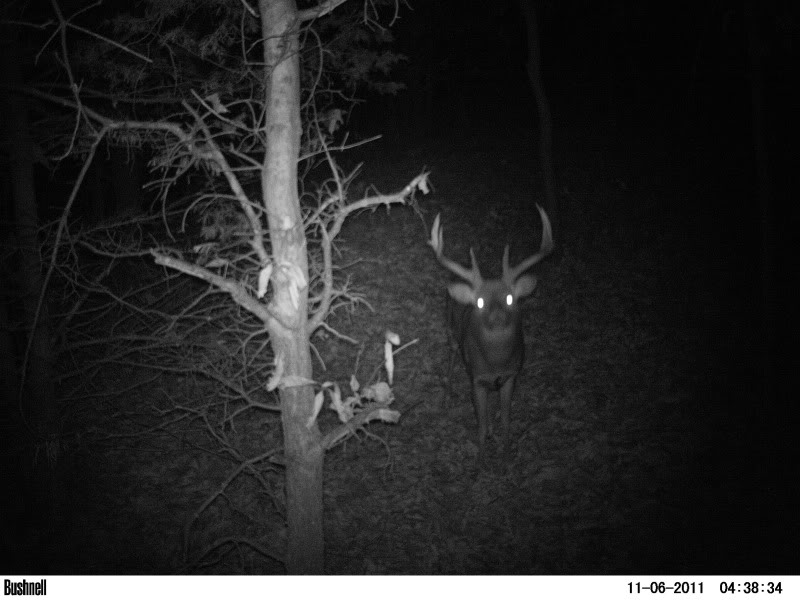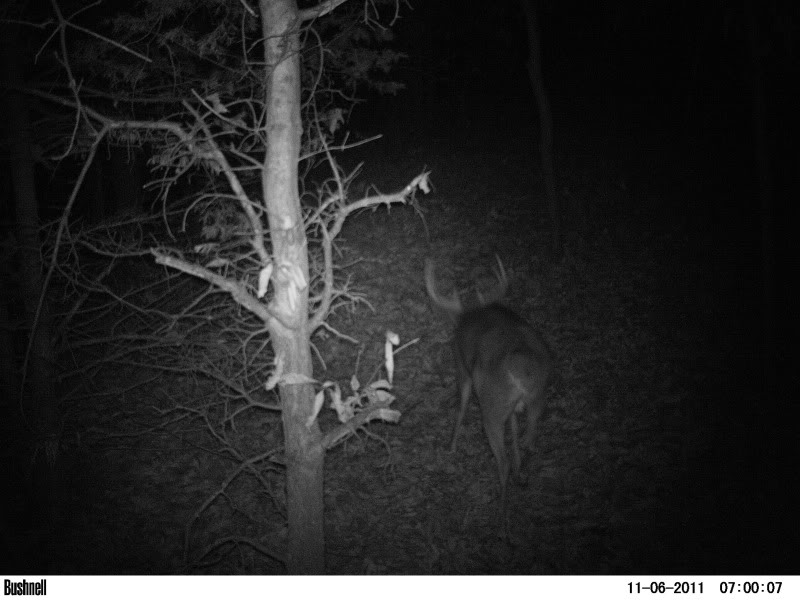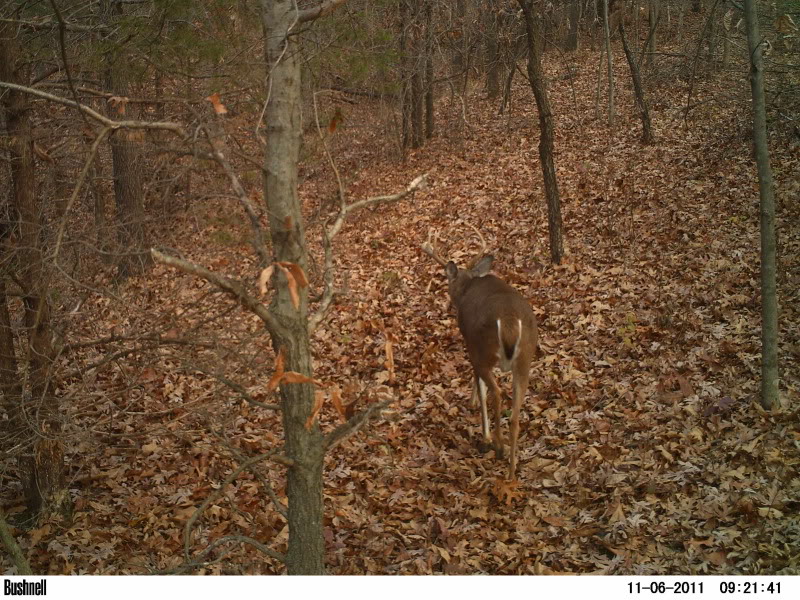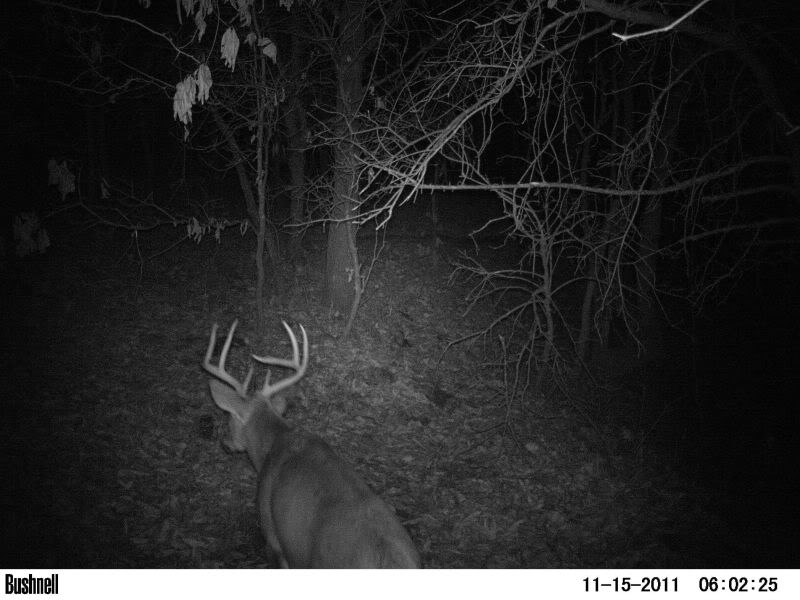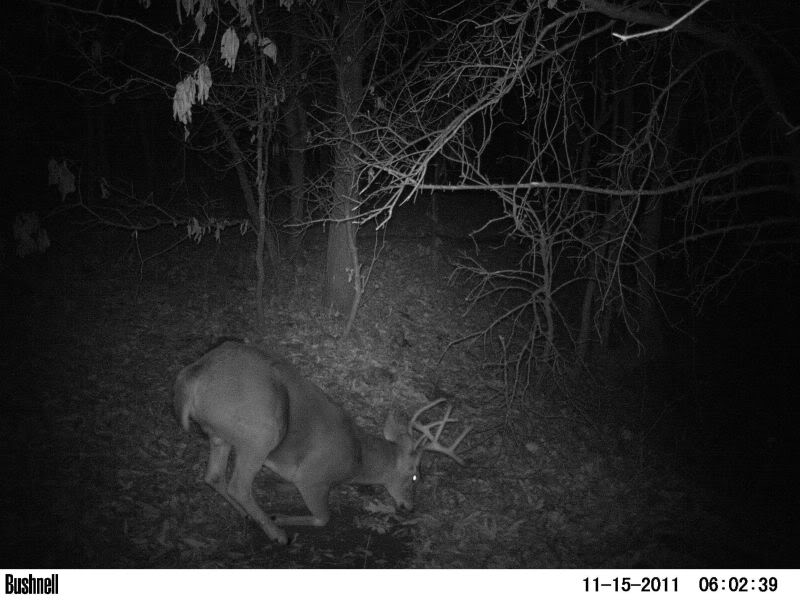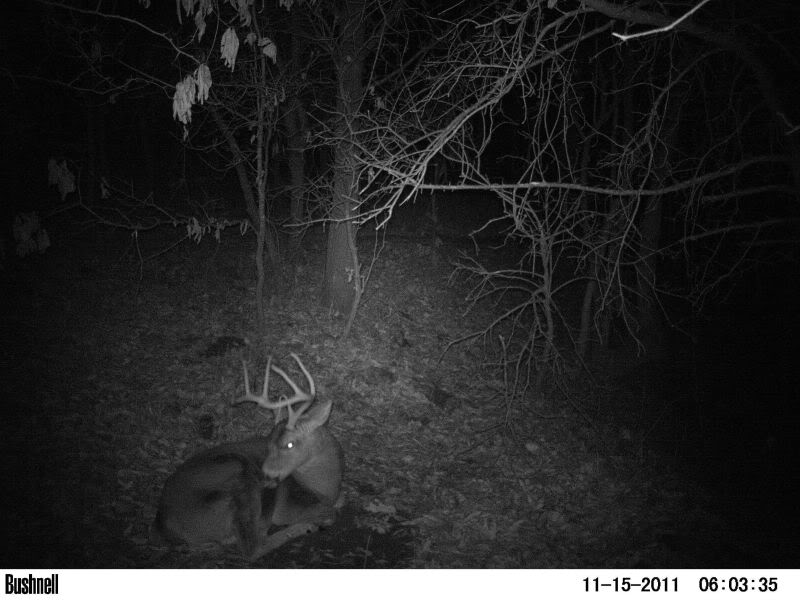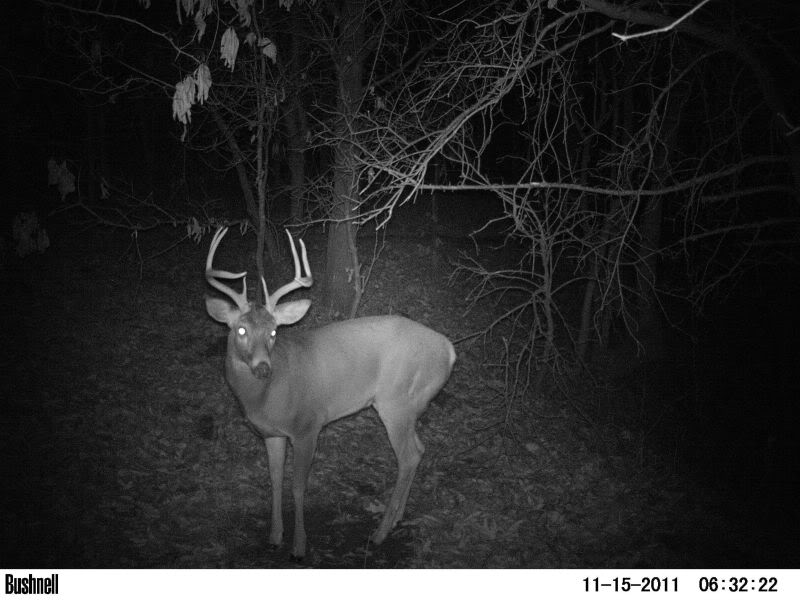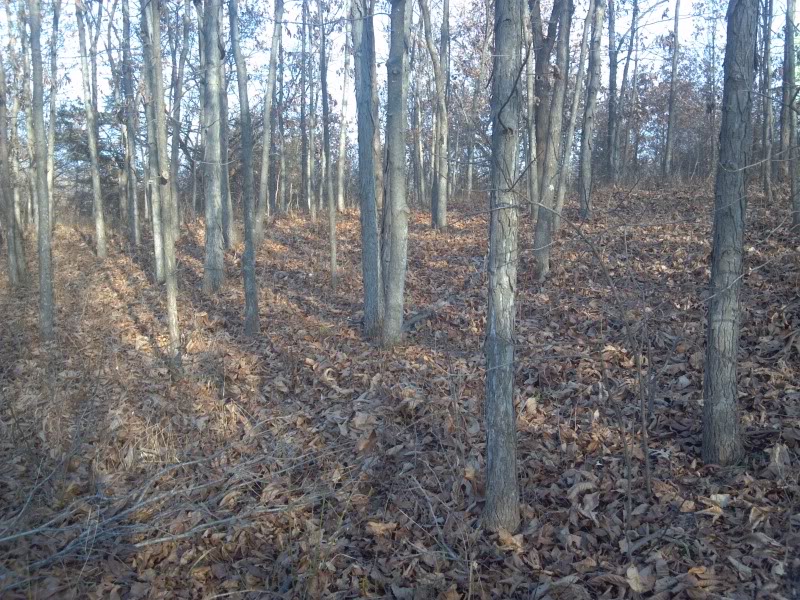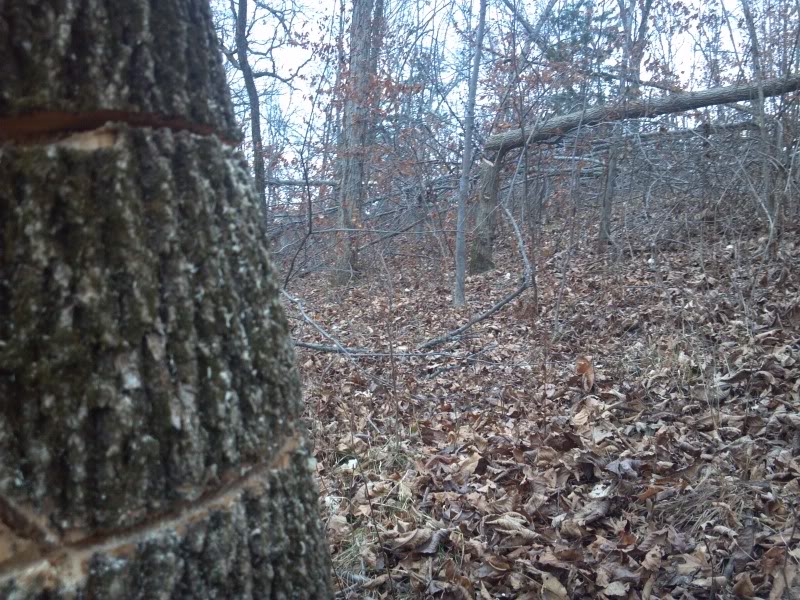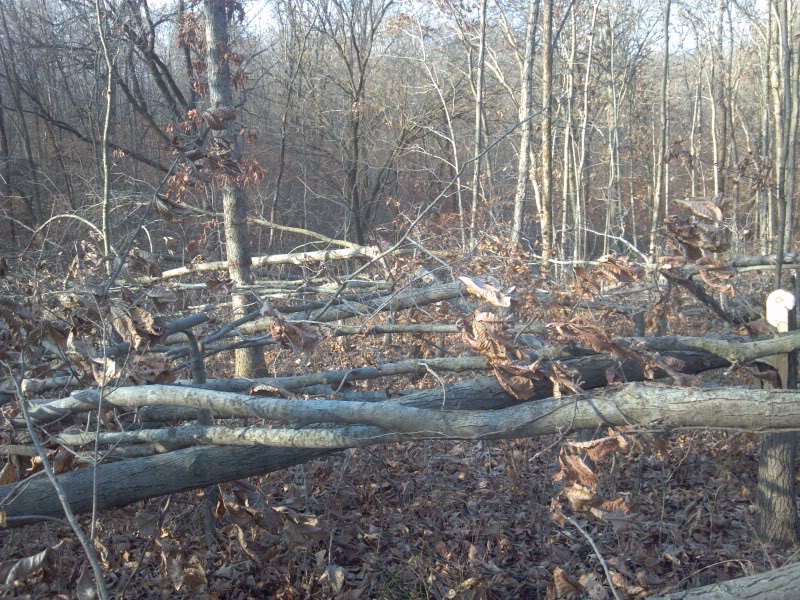Example of a hinged tree...in this case cut for blocking but it shows how the hinged tree now also provides browse, screening and in the right area bedding
Little hard to see here but the area in the background was hinged last winter, so while you may not be able to see in detail...what you
don't see is a wide open area that deer do not feel comfortable using.
This pic shows re-growth 4 years after hinging trees...this is rich low land soil so that often causes an explosion of new re-growth both from hinged trees and the reduced canopy. Typically where higher ground such as a ridge is immediately adjacent, deer will choose the ridge for bedding, if the area is all flat and low they will probably seek out subtle rises that are drier depending on the time of year. This area is primarily used for browsing and travel cover and they bed on the adjacent ridge. Note the thick blackberries and shrubby cover along the outer edge, further screening deer as well as providing edge browse.
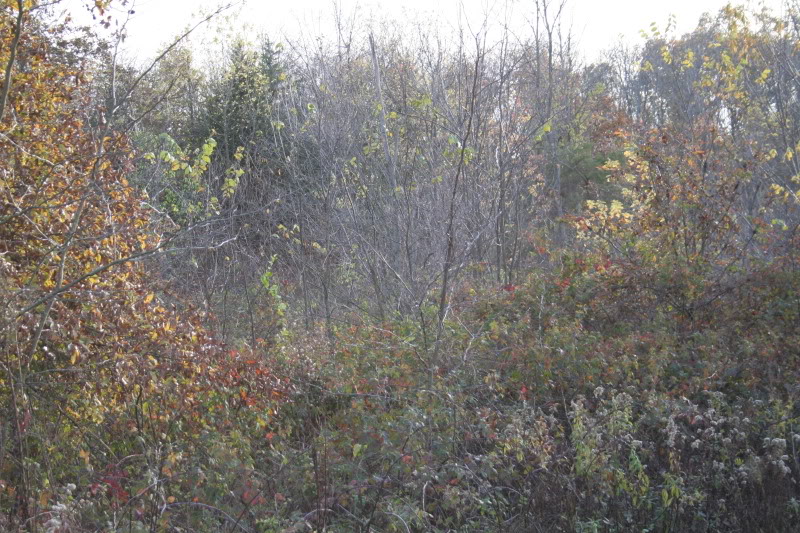
One of our goals in managing our timber resources should be to promote quality oak timber growth and mast production through proper Timber Stand Improvement methods. Hinging can be a tool to help in this process especially in areas that may be 60-90% "weed trees" both to reduce canopy and competition but also to promote regeneration and where needed, allow for hand planting of oak seedlings.
Regeneration will vary by soils and level of seed trees in the area but here are some examples of my own timber where hinging has been ongoing for 4-5 years now. Young oaks are reaching up thru the mass of undergrowth...
Often the perception is that due to the resulting thick undergrowth that oak regeneration is not possible and there are extreme cases where invasives do make regeneration impossible so each landowner must monitor the results of their hinging project and be prepared to take steps to control invasives which could include everything from Reeds Canary grass to Honeysuckle.
In most cases in my area the hinging itself has released the seedlings by reducing canopy and they quickly spring to life. You can see that there is simply no competing canopy from this hickory, yet it provides bedding and browse for whitetails where once there was zero of either.
Beds abound in the hinged area which means that the presence of deer will also mean increased browsing of the young oaks
Seedlings in the wide open are far more likely to be browsed then...
Those coming up thru hinged tops
and resulting blackberry brambles
Young oaks can endure some shading when young yet will survive to grow above the blackberries
On this farm the oaks consist of primarily burr (white species) oaks and black (red species) oaks....neither of which are the ultimate in either hardwood or mast preference
So I started native white oak and red oak acorns from seed in Rootmaker cells from trees noted for good mast production and had planted them this fall amongst the hinged trees. An 18 cell RM tray and carrier is roughly $6-8 and there was no cost for hand picked acorns...$3-5 for a tube and stake means every landowner could easily add a dozen or two oaks to their hinge cuttings every year.
I also added some Dwarf Chinkapin oaks (white oak) for diversity
but often found it difficult to find a spot where young oaks were not already growing!
Hinging cull or weed trees can be extremely beneficial in providing increased bedding and browse and holding mature whitetails on your property and if done correctly we can also promote oak regeneration which long term will increase the value of our property and further enhance our habitat with increased mast production.
Monitor the resulting "aftermath" of your hinging and be prepared to kill invasives with herbicides and hand plant oak seedlings, using tubes and herbicide to protect them both from over browsing and competition from invasives. Timber is one of our most valuable resources and yet the most often overlooked...look yours over from your tree stand this fall and start making plans for improvement when season is over....

More details on growing oaks from seed here:
Acorns - Growing Oaks from Seed
Consider adding some chestnut seedlings while your at it but be certain to tube them and eventually fence them or deer will decimate them.


